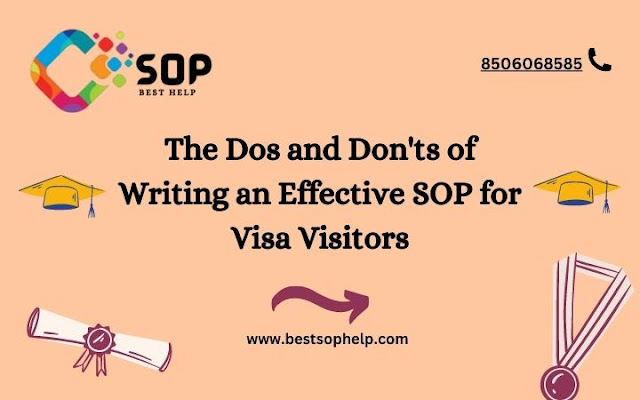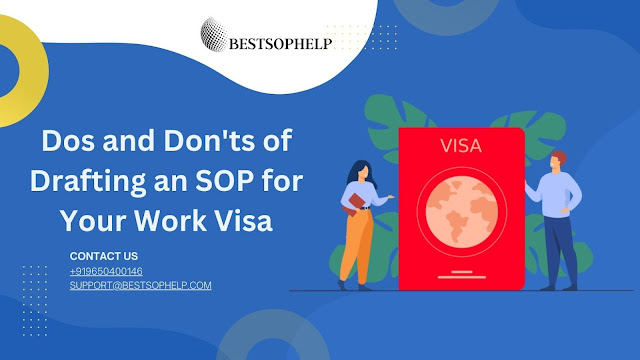The Dos and Don'ts of Writing an Effective SOP for Visa Visitors
Introduction:
When it comes to applying for a visa, a well-crafted Statement of Purpose (SOP) can make all the difference. An SOP is a document that allows visa officers to understand the purpose of your visit, ensuring transparency and credibility. To help you navigate through this critical aspect of the visa application process, this blog will outline the dos and don'ts of writing an effective SOP for visa visitors.
Dos:
1. Be Clear and Concise:
An effective SOP should be clear, concise, and to the point. Avoid unnecessary jargon or lengthy paragraphs that may confuse the reader. Instead, present your intentions and plans in a straightforward manner, ensuring that the purpose of your visit is easily understandable.
2. Outline Your Itinerary:
Provide a detailed itinerary of your visit, including the places you plan to visit, the duration of your stay, and any planned activities. This will demonstrate that you have thoroughly planned your trip and have genuine reasons for visiting the country.
3. Showcase Your Intentions:
Clearly state your intentions for visiting the country and how it aligns with your personal or professional goals. Whether it's attending a conference, pursuing higher education, or exploring cultural heritage, emphasise the positive impact this visit will have on your life or career.
4. Highlight Your Ties to Your Home Country:
To convince visa officers that you have strong ties to your home country and intend to return after your visit, emphasise your familial, social, and professional connections. Provide evidence such as property ownership, employment contracts, or educational commitments that showcase your strong ties to your home country.
Demonstrate Financial Stability:
Give the immigration authorities information about your financial stability to demonstrate to them that you have the resources to support yourself while abroad. Give proof of your financial situation, such as bank records, tax returns, or letters of sponsorship, to demonstrate that you are able to pay for your costs without the help of the government.
Don'ts:
1. Exaggerate or Lie:
Avoid exaggerating your intentions or providing false information in your SOP. Honesty is crucial, as any inconsistencies can lead to visa refusal or even a ban. Stick to the facts and present your case truthfully.
2. Use Complex Language:
While it's important to articulate your purpose clearly, using excessively complex language can make your SOP difficult to understand. Keep your language simple, yet professional, to ensure that your message is effectively conveyed.
3. Include Irrelevant Information:
Be mindful of the information you include in your SOP. Stick to the relevant details related to your visit and avoid unnecessary personal anecdotes or unrelated information. Focus on showcasing the purpose and legitimacy of your visit.
4. Overwhelm with Lengthy Explanations:
Visa officers have limited time to review each application, so it's important to present your case succinctly. Avoid lengthy explanations that can overwhelm the reader. Stick to the key points and provide necessary supporting evidence to back up your claims.
5. Neglect Proofreading and Editing:
Before submitting your SOP, thoroughly proofread and edit it for grammatical errors, spelling mistakes, and clarity. Poorly written Sops can create a negative impression and decrease your chances of approval. Take the time to review and refine your document to ensure it is polished and error-free.
Conclusion:
Writing a strong SOP is crucial for visa applicants because it aids visa officers in comprehending the rationale and validity of the visit. You may write a strong SOP that raises your chances of getting a visa by adhering to the dos and don'ts listed in this article. While emphasising your aims, ties to your native nation, and financial security, keep in mind to be precise, succinct, and truthful. I wish you luck as you apply for a visa!
Visit now: Sop writing services.



.jpg)
Comments
Post a Comment